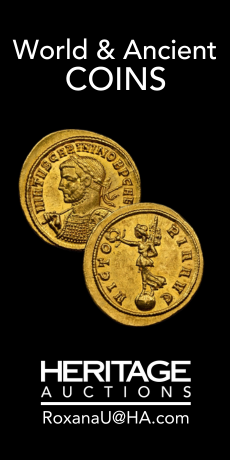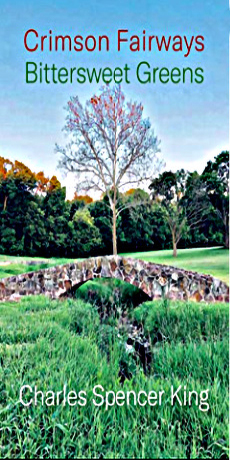By Scott Holleran
“Little House on the Prairie” debuted on American television 50 years ago. The man who made the popular NBC program—and historic literature by Laura Ingalls
Wilder upon which the show is based—possible migrated to Chicagoland 150 years ago. This choice to go west, as the saying goes, changed everything. What follows is a story of a young pioneer, railroader and artist who forged a family, way of life and spirit of individualism. The man is Charles Ingalls.

Without Mr. Ingalls, his daughter Laura Ingalls Wilder’s bestselling novels, which propelled interest in the pioneer girl/frontierswoman prototype—forecasting American Girl dolls—may also not have been possible. “There were a whole slew of us Wilder girls,” Amy Lifson, assistant editor for the National Endowment for
the Humanities, wrote 10 years ago. “It was nearly a cult after the 1971 paperback boxed edition of Wilder’s books was published, which then ballooned once the television series produced by Michael Landon came along in 1974.”
Lifson notes that over 60 million copies of the “Little House” books sold between 1932 and 2010. The Library of America released a two-volume edition of Wilder’s
nine books—“Little House in the Big Woods,” “Farmer Boy,” “Little House on the Prairie,” “On the Banks of Plum Creek,” “By the Shores of Silver Lake,” “The Long Winter,” “Little Town on the Prairie,” “These Happy Golden Years” and “The First Four Years”—which include Wilder’s speeches, notes and a chronology, though not the Garth Williams drawings for the 1953 edition.
Millions of children and adults were drawn to reading about Laura Ingalls Wilder’s “childhood of marked deprivation in which Laura and her sisters might each receive a penny and a piece of candy for Christmas, where wolves prowled and howled outside their windows, miles of prairie ignited in flames, and clouds of locusts darkened the sky and descended to eat the earth bare,” as Lifson wrote.“ Despite the trail of adversity the Ingalls [family] faced, the books—especially the early ones—offer the sense of a happy busy childhood where the troubles and worries of adults are absent.”
Credit for this world of childlike joy, imagination and resolve chiefly belongs to Charles Ingalls—“…Pa with his fiddle and his songs,” as his daughter Laura recalled—a sensibility which may have been born in metropolitan Chicago, where the boy Charles Ingalls probably held a musical instrument for the first time while living on a farm near Elgin, described by Caroline Fraser in “Prairie Fires: The American Dreams of Laura Ingalls Wilder” as an “outpost on the Fox River.”
The prospect of Woman indubitably influenced by Man goes against the ethos of early mid-20th century feminism. Yet three enterprising women—Laura Ingalls Wilder, her daughter, Rose Wilder Lane, and Virginia Kirkus, founder of Kirkus Reviews—each of whom were pivotal to “Little House” success, explicitly recognized the commercial appeal, charm and potential of the sensitive, intelligent and resilient Midwesterner Charles Ingalls raising a family on the frontier.
Wilder’s writing, which had been rejected by The Atlantic and The Saturday Evening Post, had confidentially been revised, retitled and sent by daughter Rose to a friend in Knopf’s children’s literature department. Someone at Knopf read the manuscript and offered Wilder a three-book contract. Though the Depression caused Knopf to shutter its children’s imprint before publication, Lane persevered to circulate the manuscript which eventually landed with Harper & Brother’s Virginia Kirkus, who first became fascinated while reading about life on the prairie while riding the train home to Connecticut. Kirkus was engrossed by Wilder’s tales; she missed her stop. “The real magic was in the telling,” Kirkus wrote.
Who is Charles Ingalls and what’s his connection to Chicago?
Charles, second of nine children to Laura and Lansford Ingalls, was born in a village near the Western New York border with Pennsylvania on January 10, 1836. The struggling Ingalls family joined the exodus West when Charles was a boy, probably riding along the Sauk trail and visiting Chicago before settling on land west of Elgin. Growing up in the 1840s, Ingalls became a trapper and hunter, as well as a carpenter and wheat farmer—driven by necessity—and showed intense interest in reading books. During this time, Charles Ingalls played the violin.
In her prairie tales, Laura Ingalls Wilder describes her dad as a poet and musician known for being perpetually “jolly, inclined to be reckless,” and, she added, he “loved his violin.” Ingalls was an active father who had married a quiet and unassuming woman named Caroline Quiner. Laura, second child of second child Charles, wrote that he entertained his five children—Mary, Laura, Caroline, Charles (who died as an infant) and Grace—particularly during challenging times.
Throughout his life, Charles Ingalls worked in a variety of jobs, including as a butcher. Before he died in 1902 at 66, he’d been hired as a town’s justice of the peace in South Dakota, where the transient Ingalls family eventually settled.
Ingalls family residences included homes in Kansas, Minnesota, Iowa, Wisconsin, where Charles Ingalls met and married wife Caroline and where Laura was born, and South Dakota, where Ingalls was hired to work as a book and timekeeper through his sister’s husband for a railroad. The line was the Chicago and North Western Railroad Company, which strongly figures into Ingalls family lore.
Ingalls’ migration into Northern Midwest begins in Chicagoland
The Ingalls family, following the Charles Ingalls example, achieved resilience as they struggled, bordering on poverty, according to author Pamela Smith Hill. Describing herself as a girl who “grew up in Springfield, Missouri, on a steady diet of Bible stories and old TV westerns,” Hill, who wrote “Laura Ingalls Wilder: A Writer’s Life” and edited “Laura Ingalls Wilder’s Pioneer Girl: The Annotated Autobiography,” studied family history, including pre-teen Laura’s work as a hired girl. Charles Ingalls lived his formative years in Campton Township, approximately from 1844 until 1850. During this period, Charles frequented a lively tavern that’s now part of Garfield’s farm museum.
“Prairie Fires” author Caroline Fraser describes Ingalls in burgeoning Chicagoland:
“This was Charles Ingalls’s first sight of the open plains. After the closed-in gloom of upstate New York, rolling western grasslands must have been a revelation. According to another settler, the Illinois prairies were still a thrilling wolf-howling wilderness,’ packed with game and hopping with prairie chickens. Writing to a friend back in Kentucky, Daniel Pingree, who bought 160 acres of Kane County farmland not far from where the Ingallses settled, waxed lyrical over the rich productive soil, perfect for corn or wheat, and groves of oaks offering up raw material for cabins or fence rails: ‘In my opinion you could not find a better County in all the world for farming.’”
Extended family of Charles Ingalls thrived at first in Kane County, Illinois, Fraser wrote, buying 164 acres of private property. “But soon the land was gone—perhaps
sold or lost on taxes—and Charles’s father appeared on the 1850 census as a ‘laborer.’” Teenager Charles, possibly with his older brother and cousins, “attended monthly Saturday dances upstairs at the Garfield House, a two-story brick inn and tavern near his uncles’ land. It may have been here that Charles picked up the violin, acquiring a taste for spirited music and dancing.”
Charles Ingalls was also learning to think, read and indulge in knowledge and imagination. A mile south of Ingalls family land, a private “subscription school”—this was before government-sponsored or “public” schools—taught in 1840 by a woman named Charlotte Griggs, may have contributed to Charles’s “lifelong dedication to books and his charming, literate style.” In addition to chickens, Fraser reported, Illinois was abundant with “geese, ducks, cranes (once a game bird), badgers, and foxes. But while his uncles kept working their farms in the area, his own family moved yet again around 1853, following the Fox River north to Wisconsin.”
Chicago’s impact and influence on Ingalls presented itself again in 1879 when Charles Ingalls went to work for the Chicago and North Western—Ingalls is one of many notable employees of the railroad including Chicago industrialist Silas B. Cobb, Scopes monkey trial attorney Clarence Darrow, who was the rail company’s chief counsel and Harlem Globetrotters founder Abe Saperstein—which became one of the longest railroads in the United States with capacity of more than 20,000 cars. With America’s largest potato storage sheds, the railroad carried Western U.S. potatoes, sugar beets, wheat and corn to the Midwest, where Chicago and North Western operated commuter trains and introduced possibly the first control car.
“The Chicago and North Western railroad was extending its line west into Dakota territory,” John Miller writes in “Becoming Laura Ingalls Wilder.” “Charles’s sister Loudocia offered an opportunity to him when she came through Walnut Grove [Minnesota] on her way west to the railroad camp where her husband, Hiram Forbes, was a contractor for the building of the railroad.” Forbes was looking for someone who could act as bookkeeper and timekeeper for his employees. When his sister told Charles that her husband was willing to pay $50 a month, Ingalls considered yet another move West with his family. In the new American territory, homesteads would be close to the railroad tracks. “The next day,” Miller wrote, “Charles told his sister that he would accept her offer. He sold the house that he had built and the lot that he had bought…and prepared to leave.”
Docia Ingalls Forbes had a checkered history, however, according to author Fraser. Divorcing her first husband after he was convicted of murdering a trespasser, Charles Ingalls’s sister then married Forbes, a contractor working for the Chicago and North Western, which was laying the rails west to Pierre. “Managing 180 teams of horses and 480 men, Forbes hired his brother-in-law [Charles] in June as bookkeeper and manager of the company store, selling goods to the graders.”
On the morning of September 6, 1879, his wife, Caroline, and her daughters boarded the train for the seven-mile trip west to Tracy, Minnesota, then the last stop on the Chicago and North Western. “We were on our way again,” Wilder wrote years later, “and going in the direction which always brought the happiest changes.” Throughout the brief rail journey—the first the girls had taken—Laura Ingalls Wilder described everything she saw to Mary.

Charles arrived in a lumber wagon to pick them up and take them to a Chicago and North Western camp where they spent a few memorable weeks with Hiram and Docia Forbes, their son Eugene and daughter Lena. Lena and Laura rode horses bareback—Wilder later wrote that it was “hard to tell which enjoyed it most the ponies or Lena and I”—before the Ingalls family packed up and followed the band of railroad workers west, into Dakota Territory.
The Ingalls, Miller wrote, were now part of the great Dakota boom, “a wave of migration that swept into eastern Dakota territory during the late 1870s and early 1880s, more than tripling the population of its southern part which would enter the union as the state of South Dakota in 1889 in five years time.” This was one of the last frontier regions in America made available to the plow, Miller notes, as homesteaders set up stores, grain elevators, lumberyards, blacksmith shops and other “businesses that could profit from the patronage of the farmers.” The impetus for the Dakota boom originated with the railroad headquartered in Chicago: the Chicago and North Western.
What is the Charles Ingalls legacy?
When I recently reached out and asked about the role Charles Ingalls living in Chicagoland may have had on the life and literature of Laura Ingalls Wilder and America’s culture, scholar and author Pamela Smith Hill replied via e-mail with candor. “I’m not aware of any record that sheds any meaningful light on those potentially formative years,” she admitted. “But Charles Ingalls’s fiddle case includes the date 1850 [when he lived on the farm near Elgin]. So perhaps Charles received his fiddle, which he kept throughout his life, while still living in Illinois. His fiddle plays a significant role in Laura Ingalls Wilder’s “Little House” books.” Laura recalled her Pa playing fiddle to entertain, comfort and encourage his family throughout the entire “Little House” book series, Hill points out. “Wilder includes lyrics from songs Charles Ingalls chose to play for his family, and she places them strategically throughout her novels to reinforce their plots, themes, and moods…all the songs Wilder uses in these books are historically authentic.”
How Ingalls affected his daughter, Laura, her literature and the culture
Born near Pepin, Wisconsin, in 1867, Laura Ingalls Wilder spent most of her childhood on the move—to Indian Territory in Oklahoma to Iowa’s and Minnesota’s prairies and finally to De Smet, South Dakota—“trudging onward in the hope of something better. Seven of the “Little House” books chronicle these years, often spent in isolated places with only her immediate family, encountering disasters of biblical proportions,” as Lifson once wrote.
Wilder attributed “whatever religion, romance and patriotism I have…to the violin and my father playing in the twilight.” In one scene, Pa lets Laura get up in the middle of the night to show her a pack of wolves surrounding their doorless little house on the prairie. “Laura clutched her toes into a crack of the wall and she folded her arms on the window slab, and she looked and looked at that wolf. . . . ‘He’s awful big,’ Laura whispered. ‘Yes, and see how his coat shines,’ Pa whispered into her hair. The moonlight made little glitters on the edges of the shaggy fur, all around the big wolf.” The description “captures the experience of fear, but also fear modulated by the beauty of the scene,” says Fraser. “It’s an incredible moment in American literature where you see that fear and the fascination with wilderness.”
“One of the main motivating factors behind writing these books for Wilder was to recapture these memories of her father and her sister Mary,” Fraser told Lifson. “She had a desire to recapture her relationships one last time, to write these books really as a memorial to her family. The intensity of these feelings, heightened by a sense of sorrow and guilt of not being able to be with them, makes the books so moving. It wasn’t that she just had some uncanny ability to remember what it was like to be five, or eight, or ten, but that she was really reliving her relationships, which were forged in some of the most intense life-altering and life-threatening kinds of experiences.”
Again, Chicago’s role in the Ingalls family’s a part of the lore. When the frontier family first became aware of first-born Mary’s illness, spinal meningitis, Charles Ingalls became so conflicted and driven that he eventually took Mary to a doctor in Chicago. Sadly, it’s in Chicago, according to Fraser, where Charles Ingalls was notified and informed “that the nerves of [his oldest daughter’s] eyes were paralyzed and there was no hope.” Decades later, after Charles had died, the Carson, Pirie, Scott department store in Chicago held a party on Laura Ingalls Wilder’s 80th birthday (February 7, 1947)—Wilder was unable to attend, so “she sent 200 autographs”-where guests signed a huge oversize birthday card, which was sent to Laura. It is now displayed at the Laura Ingalls Wilder Historic Home and Museum. Laura was overwhelmed by the honor. By a majority of 1,734 votes in a poll of Chicago children, she was proclaimed the city’s favorite children’s author.”
The third Ingalls, daughter, Caroline—who went by Carrie—like her dad, had struggled throughout her adult life in multiple odd jobs as a newspaperwoman and homesteader. When she died, Fraser reported, Carrie’s body was transported back to South Dakota via the Chicago and North Western railroad line to De Smet, “where she would be laid next to her parents, her sister Mary, and the infant son of the Wilders.” Caroline Fraser wrote that Charles Ingalls, who had continuously worked as a farmer, homesteader, carpenter, innkeeper, butcher, railroad timekeeper, Justice of the Peace, deputy sheriff, town clerk, shopkeeper and peddler—as well as selling insurance and farm machinery and twine to bind hay—had built every one of his family’s little houses, “laboring mightily to clear unbroken land,” which affected his body and health. By 1900, Laura’s spirited father suffered from “congestion of the lungs,” and a newspaper reported that he was “in a bad way.” At the age of sixty-six, he was dying.
At the age of 35, Laura Ingalls Wilder, “made the long and circuitous journey back: boarding the train north to Kansas City, transferring to go across Minnesota, and, finally, taking the railway her father had helped build, the Chicago and North Western, which brought her to De Smet to spend her final days, hours and moment with her father. The Kingsbury Independent reported that she arrived on the evening of Tuesday, May 27, for a visit planned to last several weeks. The newspaper noted her father’s illness, saying he was suffering from heart trouble. Decades later, Rose would say that he had suffered a “coronary thrombosis” caused by what doctors called “tobacco heart,” from smoking a pipe.
Charles Ingalls died on June 8, 1902, at three o’clock on a Sunday afternoon. “As far as Laura was concerned,” Fraser wrote, “with him went all of the music and joy of their years together. Gone were the songs of her childhood, his easygoing ways and cheerful determination, his adoring gaze.”
“It had been an extraordinary life,” she noted, referring to Charles Ingalls as the embodiment of what his daughter called “the frontier spirit,” from his birth in New York to his death in South Dakota. Ingalls had traveled thousands of miles by horseback and covered wagon, crossing great rivers, hunting in the Big Woods, and riding among the last wolves on America’s Great Plains. “He had witnessed the Osage [Indians] banished from their prairie home and the grasshoppers descending upon his. He had seen the rise and fall of homestead hopes, building house after little house, fighting every prairie fire that sought to consume them. And he did it with grace, eloquence, and good humor.”
Laura would describe her earliest memories of Charles Ingalls, starting with his eyes, “so clear and sharp and blue” that could “look unerringly along a rifle barrel in the face of a bear…and yet were so tender as they rested on his [wife] Caroline…or me.” Laura recalled his thick brown hair and his strength and endurance. The last words in the first book written by Laura Ingalls Wilder, who was 65 years old when it was first published:
“She thought to herself, “This is now.”
She was glad that the cosy house, and Pa and Ma and
the firelight and the music, were now. They could not be
forgotten, she thought, because now is now. It can never
be a long time ago.”
—Laura Ingalls Wilder, “Little House in the Big Woods”
Sources: “The Selected Letters of Laura Ingalls Wilder,” William Anderson and Laura Ingalls Wilder; “Prairie Fires: The American Dreams of Laura Ingalls Wilder” by Caroline Fraser; author and scholar Pamela Smith Hill; “Becoming Laura Ingalls Wilder” by John Miller; by Amy Lifson.






